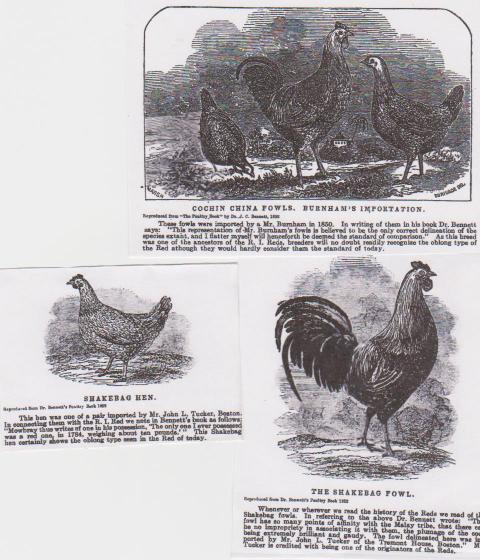Quote:
Yep. That was a HUGE problem for me this year. Normally I go by the old adage: "Build the barn, then paint it", which is still a good one. But last year I got some bad advice that said that breeding with hens who were speckled would give me offspring with good dark color. What I got was offspring that all had black in the hackles, which for someone like me (I show my birds) was a disaster. I had to sell about 30 birds, all extremely typey, but with that black I didn't want them in my breeding program. Broke my heart.
And now I'm not going to sell any chicks to anyone except homesteaders who don't care, as I worry that the black will still show up. I want to get some birds raised up and see what I have this year before I do a lot of selling.
Bob Gilbert thinks that in our quest for a good gray bar we've brought too much black in, which makes sense too.
At any rate, I would advise not using birds with a lot of black speckling. One or two specks is not so much of a big deal. But a lot is a no-no.
Hi Laura,
I just read your post about the black specks in your Buckeyes and the problem you had breeding them. I also read that you won't be selling any chicks or eggs until you see what has happened. That's a bummer because I had planned to ask you for some eggs this year.
I got back from the show about 1700 last night and found a mess with the birds. Long story but suffice it to say that I had a neighbor and friend from church kids agree to take care of my birds while I was away and they obviously didnt put much concern into doing what I asked them. Had a nice talk with their Dad at church last night and it will be a good learning lesson for them while they come over this next week to show that they can do it right. This is the first time Ive gone anywhere over two years and now you know why.
Oh well, itll all turned out ok but I'm way behind in emails and that's why I'm just getting to email you now. Anyways, I took my best Buckeye pair to the show and there's one guy there that I think just recently got Buckeyes and will be breeding/showing/selling them. He's a Master Breeder & Master Exhibitor (not Buckeyes for either as far as I know) and said that he thought my pullet was very dark and that most of the females he's seen have been much lighter. I told him I had seen that too and was trying to keep only the darkest.
So now I have some questions for y'all...
1)WRT the gray bar down the back, is that for females only or males too? My female has some (not much) but I don't see any in my males at all. It's dark red all the way to the bottom. That includes the filoplumes.
2) How many black specks in the female is too much? I mean, I think I counted like 5-6 in her whole body. Is that too much?
3) Does anyone know exactly what Nettie Metcalf used to create the Buckeye? The reason I ask is that some of us were discussing this at the show and I said I think that LF Cornish had to be part of the equation. They have a very distinct eye formation and the Buckeye has it. Also, it's pretty well known that they are a heavy bird, have widely set apart legs, and huge legs that are very big around. All of which the Buckeye has as well.
There was something else and now I can't remember what it is. I'll post it if I think of it later - like probably as soon as I hit the "Submit" button!
I've only got four Buckeyes at the moment - 2 Cockerels and 2 pullets - and I am really looking forward to getting a bunch more. Birds will be in pens this weekend and I'll be collecting for the incubator pronto!
God Bless,
 Exhibition Poultry magazine that has some good articles.
Exhibition Poultry magazine that has some good articles.
 The third issue and previous two are available online at:
The third issue and previous two are available online at: 



